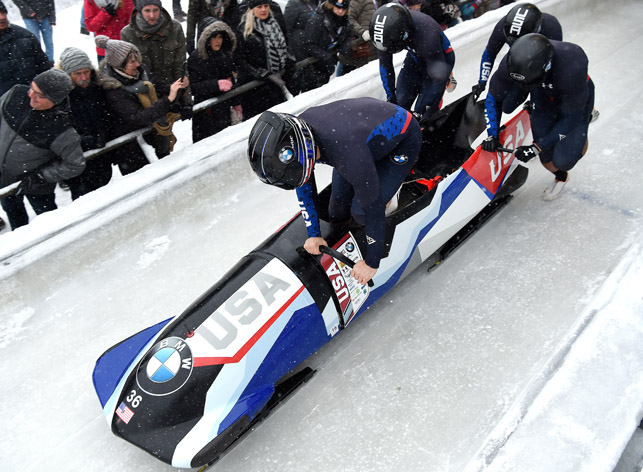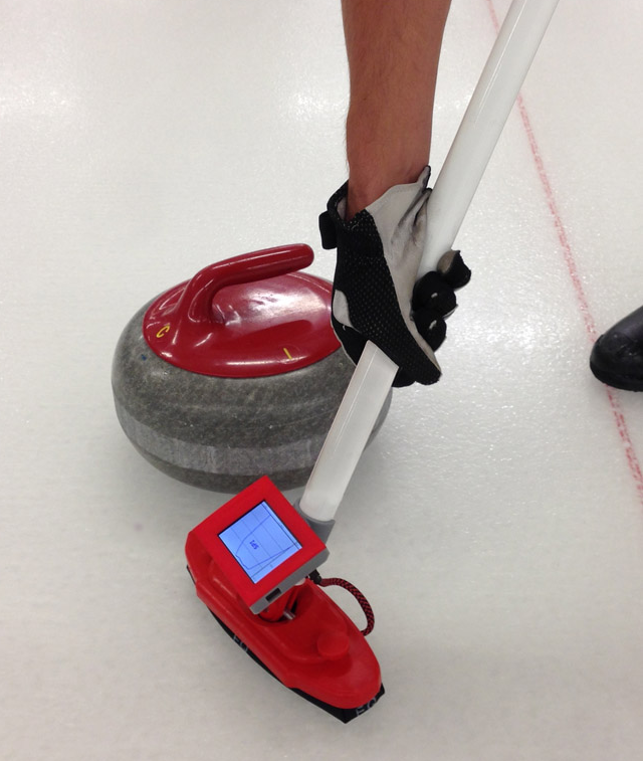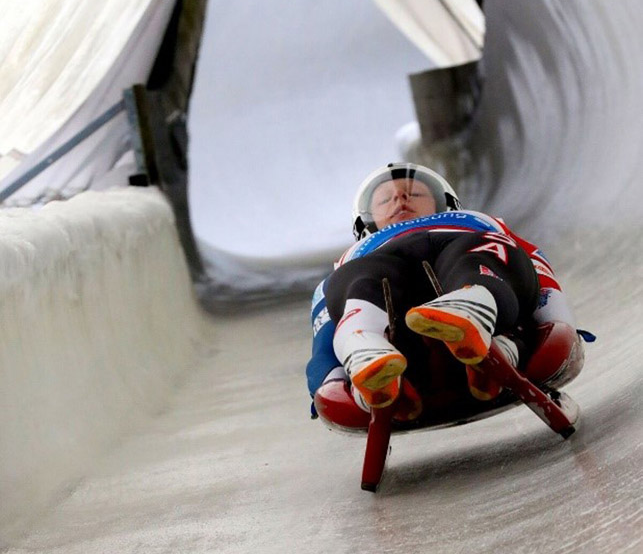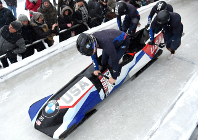
Speed demon
There is no denying that many athletes enjoy adrenaline despite their sport of choice being pretty dangerous. Take the ‘sliding sports’ at the Olympics of bobsleigh (or bobsled), skeleton and luge.
These athletes essentially barrel their way down a narrow icy track with twists and turns in a sled either on their own or with team mates, reaching speeds in excess of 80 mph. For the extra thrill, factor, with skeleton the athletes will speed down headfirst on their stomachs with their chins just inches off the ice.
Paramount to success in these sports, aside from the skill of the athlete, is the equipment and in the case of bobsledding it’s the gravity powered sled. The sleds, which are built for either two or four occupants, need to have a strong but light body shell with a low and centralised centre of gravity – making it faster and easier to steer.
At the Winter Olympics, the USA bobsled and skeleton teams were in sleds manufactured by deBotech, a North Carolina based company specialising in advanced composite parts, and using carbon fibre composite materials from the global chemical company Solvay.
Founded by Hans deBot out of his garage in 1998, deBotech has developed parts for a range of lightweight applications from motorsports and aviation to marine and the military. Then in 2002, deBot was approached to design and build a four-man bobsled for the USA Olympic team.
Having downloaded the bobsled specifications from the internet, he set to work creating the body work, which included the nose, rear, seats, saddles, handles and foot-trays.
Following its success, deBotech has since worked with BMW North America, which partnered with the USA Olympic Bobsled and Skeleton teams to design its sleds for the Sochi Olympic Games in 2014.
For the 2018 Winter Olympics, the BMW-designed sled cut a very lightweight and aerodynamic figure but unfortunately didn’t result in the desired podium places, other than a silver medal in the women’s bobsled, as Germany literally wiped the floor in this field.

Winter Olympics – Clean sweep
On paper, curling sounds ridiculous (as some sports often do). In a team of four, one slides a 40 pound stone (that has been polished within an inch of its life) down a sheet of ice towards a target. Fellow team members then use a broom to manically brush the ice in front of the stone to manipulate its path, all the while shouting at their team members. It apparently takes a great deal of skill and strategy and is quite frankly mesmerising to watch.
The granite stone itself is very important (and for the Winter Olympics all the stones are sourced and made on a small Scottish island) but a lot of it is about the handling of the broom and the sweeping technique.
The majority of the teams at the 2018 Winter Olympics, including the winning USA team, use SmartBroom from a small Toronto-based company – Canadian Curling Tools.
Created by a curling coach and two engineering graduates, the SmartBroom incorporates sensors for measuring the stroke rate and force applied when sweeping. This data is then relayed through a small display screen in realtime enabling athletes to review and track their performance.

Put your back in it
Luge is another sliding sport but unlike speeding down an icy track head-first, as is the case in skeleton, lugers (as they’re officially known) opt for a ‘back on the sled, feet-first’ position.
The small sled can be made for either one athlete or as a very cosy seat for two athletes in the doubles race.
Team USA Luge entered the Winter Olympics with carbon-fibre composite sleds it hoped would give them a competitive edge. During the prototyping phase, it had partnered with Stratasys in the customisation of its tooling using additive manufacturing (AM).
For example, the Stratasys ST-130 sacrificial tooling material was used for engineering mandrels for the racing team’s Doubles Tower – a composite structure at the sled’s front, used to accurately position the athlete’s legs.
“In teaming with Stratasys, we’ve become much more competitive on the world stage – continuously adjusting designs and running them on the track much faster than traditional processes.
Additionally, we’ve balanced both comfort and performance by tailoring the sled to each rider’s body, while minimising fabrication cost and time,” says USA Luge technical programs manger Jon Owen.
Driven by these efforts, designers are currently using this same tooling for final sled components during competition.

A look at three products that helped athletes perform at their peak
Default






